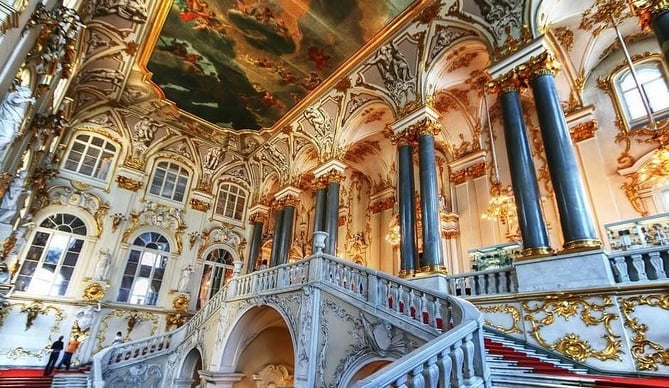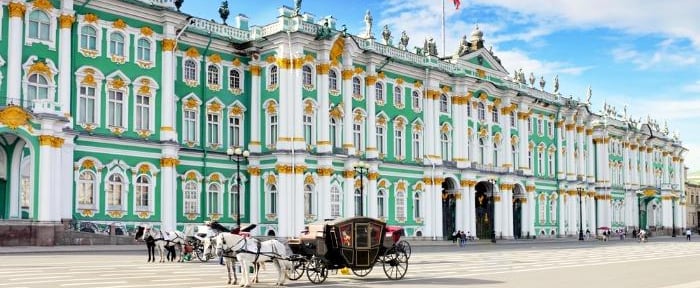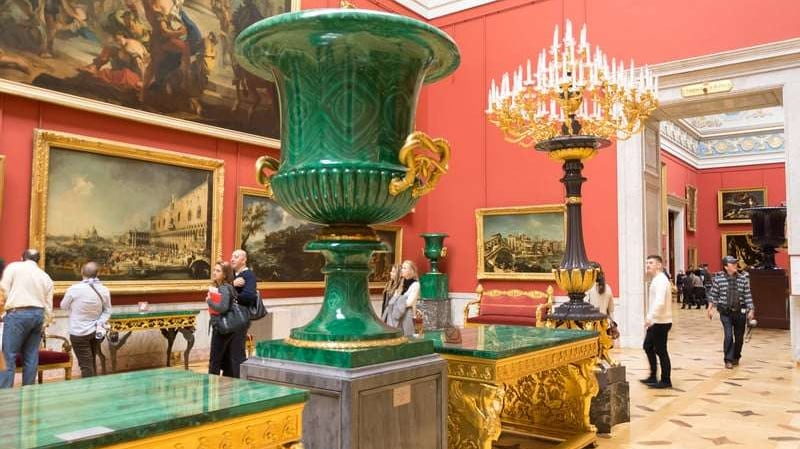Hermitage Museum: The Eternal Theatre of Art and Empire
To walk the Hermitage is to surrender to time — to drift among centuries, across continents, through realms of spirit and imagination. It is a pilgrimage of the mind and soul.


The Empress’s Dream
The story of the Hermitage begins with a woman of vision: Empress Catherine II, known to history as Catherine the Great.
In 1764, eager to enhance Russia’s cultural prestige and feed her own passion for art, Catherine acquired a collection of 225 paintings from a Berlin merchant. Thus was born the core of what would become the Hermitage.
Yet Catherine’s ambitions knew no bounds. Over the next decades, she assembled one of Europe’s finest art collections — acquiring works from bankrupt aristocrats, dissolved monasteries, and even entire galleries in Western Europe.
By the end of her reign, the private chambers of the Winter Palace and adjoining Small Hermitage were overflowing with treasures. The empress herself referred to this growing sanctuary as her “hermitage” — a place of solitude and reflection, where she and a chosen few could commune with the great works of civilization.
A Palace of Palaces
Today’s State Hermitage Museum encompasses a vast architectural complex — a constellation of historic buildings along the Neva River:
Winter Palace (1754–1762): The grand imperial residence, heart of Russian power and site of momentous historical events.
Small Hermitage (1764–1775): Catherine’s original intimate gallery, adorned with delicate rococo details.
Old Hermitage (1771–1787): The first purpose-built museum building.
New Hermitage (1839–1852): The first public museum structure in Russia.
Hermitage Theatre (1783–1787): A jewel-like venue for court performances, now used for concerts and ballet.
Together, they form a staggering 233,000 square meters of space, housing over 3 million objects — of which only a fraction can be displayed at any one time.
To wander this palace is to traverse not only space, but epochs and empires.
An Architectural Symphony
Before one even reaches the first canvas or statue, the Hermitage itself is a masterpiece.
The Winter Palace, designed by Bartolomeo Rastrelli, is a tour de force of Elizabethan Baroque — a facade of aquamarine and white, festooned with gilded columns, colossal sculptures, and the soaring double-headed eagles of Romanov Russia.
Within, a breathtaking sequence of staircases, halls, and galleries unfolds:
The Jordan Staircase, with its soaring columns and dazzling chandeliers, evokes imperial ceremony.
The Malachite Room, its columns of deep green stone gleaming against gold.
The Armorial Hall, where sunlight strikes vast golden eagles and the crests of noble families.
The Pavilion Hall, home to the legendary Peacock Clock, a Rococo marvel of gilded mechanics and whimsy.
Even empty, these spaces would be a wonder of the world. Filled as they are with the greatest works of art, they become something almost beyond description.
A Universe of Art
To list the treasures of the Hermitage is to attempt the impossible. It is a museum where entire epochs unfold within single rooms, where a corner turned reveals a Rembrandt, a Michelangelo, a Leonardo.
The Hermitage’s collection begins with the deep past:
Egyptian mummies, sarcophagi, and stelae, echoing the Nile’s ancient wisdom.
Greek sculpture and pottery, capturing the dawn of Western art.
Scythian gold, masterworks of steppe artisans who once roamed the Russian plains.
These objects whisper across millennia, speaking to the universal human impulse to create, to adorn, to remember.
The heart of the Hermitage is its unparalleled collection of Western European paintings — over 16,000 works, including:
Leonardo da Vinci: The sublime Benois Madonna and the mysterious Madonna Litta.
Raphael: The Conestabile Madonna, a vision of serene grace.
Titian: Myth and portraiture in glowing Venetian color.
Caravaggio: The raw power of The Lute Player and The Supper at Emmaus.
Rubens: The sensual and the monumental, alive with movement.
Rembrandt: Over 20 paintings, including the heart-rending Return of the Prodigal Son — one of the most profound spiritual images in art history.
El Greco, Velázquez, Goya: The Spanish soul in light and shadow.
Van Dyck, Reynolds, Gainsborough: The grand portrait traditions of Britain.
Here, one does not merely view masterpieces — one communes with them, in spaces where their beauty can unfold without haste.
Though long hidden from public view during the Soviet era, the Hermitage’s collection of 19th and early 20th-century French art is now among its most beloved:
Monet, Renoir, Degas: The shimmer of light, the dance of modern life.
Cézanne: The architecture of vision.
Van Gogh: The swirling intensity of White House at Night.
Gauguin: The color-drenched visions of Tahiti.
Matisse: Bold forms and radiant palettes, collected by Russian patrons before the revolution.
These works sing within rooms of soft light and understated elegance — a testament to the unbroken continuity of beauty even through times of upheaval.
Practical Information
Location
The State Hermitage Museum
Dvortsovaya Square, 2, Saint Petersburg, Russia
Opening Hours
Tuesday, Thursday, Saturday, Sunday: 10:30 – 18:00
Wednesday, Friday: 10:30 – 21:00
Closed on Mondays.
Tickets
Available online and on-site.
It is highly recommended to purchase in advance, especially during tourist season.
Combined tickets allow access to the main complex and selected additional sites.
Public Transport
Metro: Admiralteyskaya station is a short walk from Palace Square.
Bus and tram routes serve the area.
Accessibility
The museum offers extensive accessibility services, including ramps, elevators, and guided tours for visitors with special needs.
Visitor Services
Guided tours in multiple languages.
Audio guides and interactive mobile apps.
Museum shops offering art books, reproductions, and gifts.
Café and restaurants within the museum complex.
Frequent concerts, lectures, and special events.
For detailed information, online ticketing, and virtual tours:
https://www.hermitagemuseum.org


The Treasures Beyond Painting
The Hermitage Museum is not simply a gallery of paintings. It is a universe of art in every medium.
One turns a corner from Rembrandt’s spiritual chiaroscuro and enters halls of Italian Renaissance sculpture — bronzes by Giambologna, marbles echoing Michelangelo.
Elsewhere, entire galleries of decorative arts unfold:
French porcelain and furniture from the royal manufactories.
Sèvres dinner services once gracing imperial banquets.
Russian imperial porcelain, with the soaring double eagle and mythic motifs.
The museum’s numismatic collection is among the finest on earth, its collection of arms and armor a dazzling parade of ceremonial and battle-worn artifacts.
And high above the Neva, the Hermitage Theatre hosts music, ballet, and spectacle — a reminder that the Hermitage is not merely a mausoleum of art, but a living cultural organism.
A History Written in Blood and Light
To visit the Hermitage is also to walk the corridors of Russian history — at once sublime and tragic.
In 1917, as the October Revolution swept through Petrograd, the Winter Palace was stormed by Bolshevik forces — an event whose echoes resound through the Hermitage’s gilded halls to this day.
During the Siege of Leningrad in World War II, curators risked their lives to evacuate much of the collection; yet many works remained, protected by sandbags and vigilance amid freezing, bomb-shattered rooms.
Today, memorial plaques and photographs commemorate these keepers of the flame — men and women who ensured that the Hermitage would survive the storms of the 20th century.
Their devotion is honored each time a visitor pauses in wonder before a Da Vinci Madonna or a Scythian torc.
The Hermitage in the Modern Era
In the post-Soviet period, the Hermitage has emerged as a beacon of international cultural dialogue.
Under the visionary leadership of Director Mikhail Piotrovsky, the museum has embraced new technologies, global partnerships, and bold exhibitions.
Satellite branches in Amsterdam, London, and Kazan extend its reach, while ongoing digitization brings its treasures to a worldwide audience.
Yet the heart of the Hermitage remains here — in Saint Petersburg, in these luminous halls beside the Neva, where art and empire still converse.
The Hermitage Experience
Visiting the Hermitage is an act of immersion — not a single viewing, but a journey.
It is said that to truly see every object on display would take years. Most visitors choose instead to follow the thread of personal fascination — to linger in a particular gallery, to return again and again, to be seduced by the infinite possibilities of the place.
Here, each visit is unique:
The first-time visitor, awe-struck by the vastness and opulence.
The artist, sketchbook in hand before a Rembrandt or Rodin.
The historian, reading time in gilt and stone.
The pilgrim of beauty, drawn not by fame but by mystery.
This is the Hermitage’s greatest gift: it belongs not to the state, nor to history alone — it belongs to everyone who enters with open eyes and heart.




